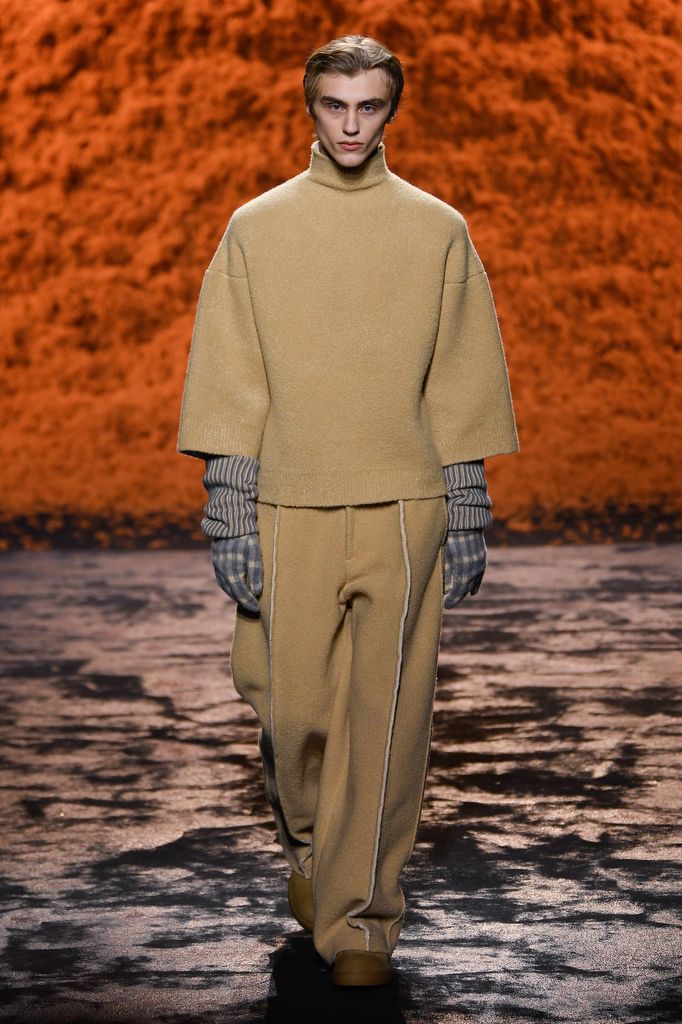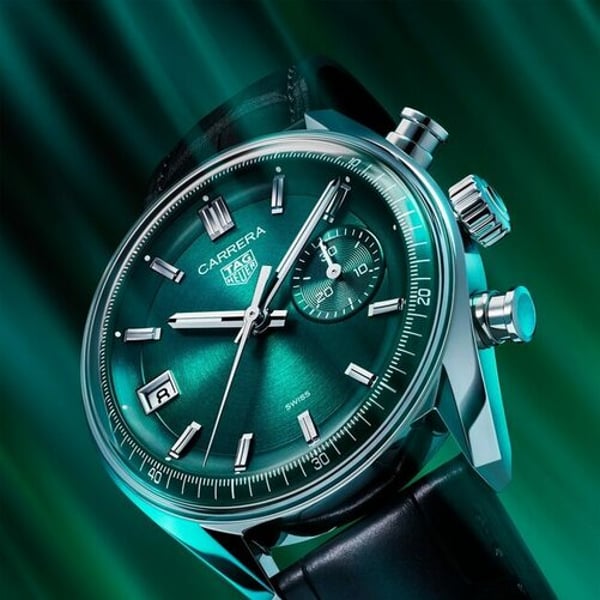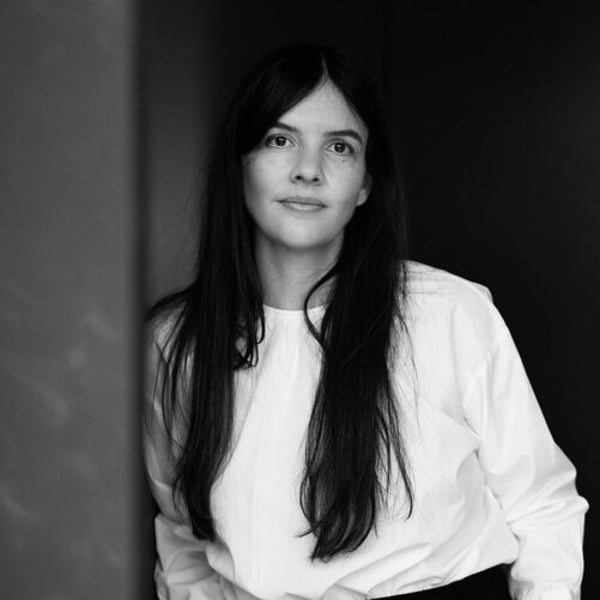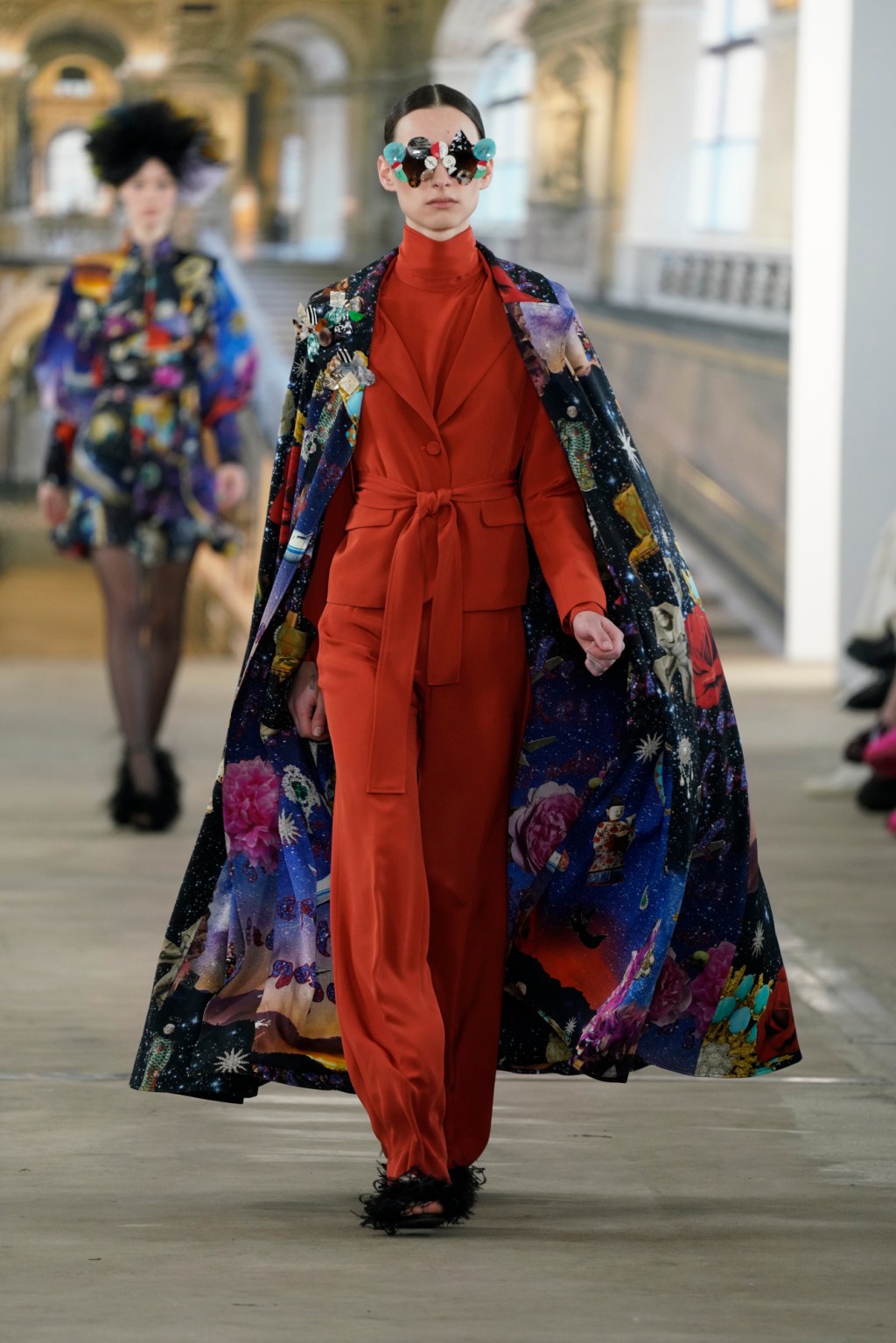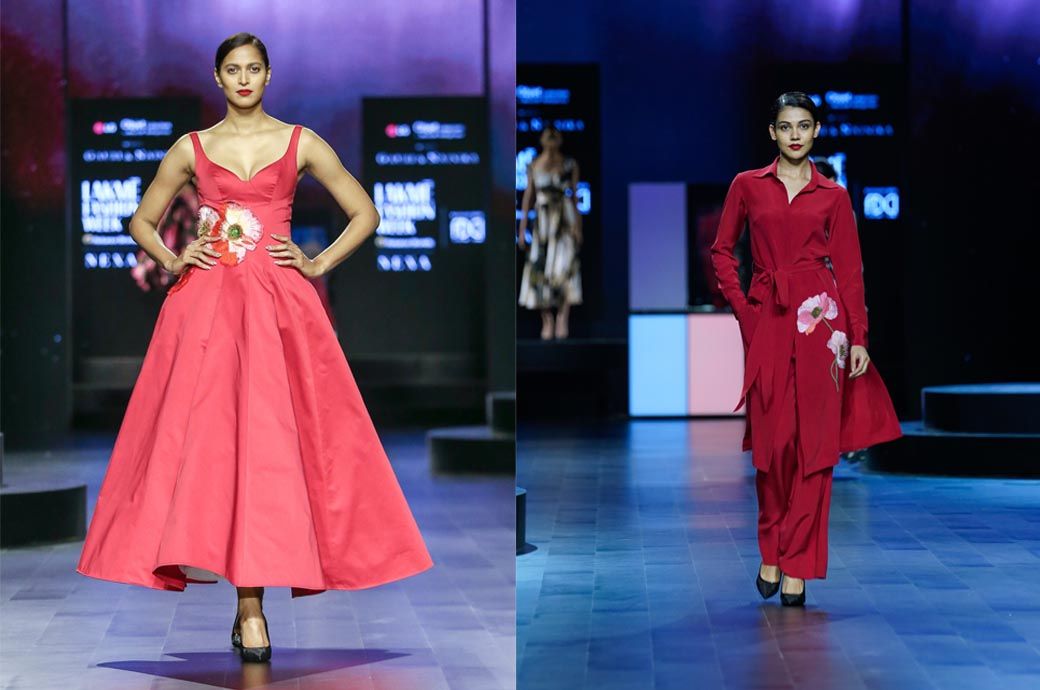For the fall, Alessandro Sartori brought an Oasi Zegna corner to Milan. Guests filed into the gigantic dark space in the city's former fairgrounds, where flakes of cashmere in Zegna's signature vicuña hue fell gently from the ceiling to form a tall pile in the center of the zigzagging catwalk, to the sound of the mountain wind blowing in the background, which was followed by the show by a soundtrack composed by British musician James Blake.
“It's like our sala delle mischie,” or the room where cashmere is mixed at the house's headquarters in Trivero, Italy, explained Sartori, the brand's artistic director, speaking of the decor.
There's no denying the designer's experience with fabrics, and listening to Sartori is always like taking a crash course in the treatment of textiles. This time was no different as he continues to push forward with his extensive research and experimentation in fabrications, materials and dyes. The result was a beautiful collection that was an organic evolution of Sartori staples that felt fresh and innovative.
There were several presentations, such as his work on the side silhouette as the pants showed a side seam that helped maintain volume. The loden coat was revisited with a new construction that Sartori humorously called a sandwich, into which three layers of cashmere were sewn. In another example, a puffer coat was created by inserting a sonically welded duvet sheet between two layers of cashmere.
Layering was a key word, without losing the feeling of ease, comfort and simplicity, but in this collection the volumes and shapes were a little more generous and enveloping than in the past. The designs were neither completely rigid nor completely loose, and Sartori placed an emphasis on hybridizing what he believes to be the brand's four main categories (tops, bottoms, bases and accessories) into an open system that can be layered and combined. according to each person's personal style. . To do so, he gave more shape to the ribbed and quilted sweaters worn as outerwear, for example, as well as to one marvel in particular: a shaved cashmere fabric.
He spoke of “a remodeling of the material and a reissue of the forms” and the line included a more outdoor, utilitarian and workwear trend. There were many pockets, oversized or slanted on the new boxy jackets of Harris tweed or soft leather. Pockets were also reduced on the 80cm long cashmere jackets, lengthened for autumn.
As Sartori advanced her luscious palette, shown in monochrome looks that included pops of soft dawn pink and violet blue, plus winter whites, butter, brown and green foliage, charcoal and black, gingham was the only pattern. This was revised in different versions, such as intarsia on a romantic short jacket, in a macro fabric that adds texture or embroidery.
It was an oasis of men's fashion.
For more MFW reviews, click here.

